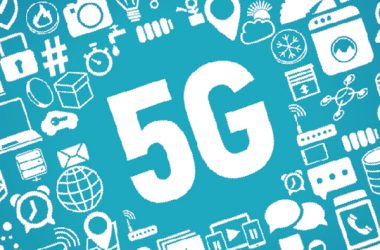Alistair Wildman, Managing Director, End User Computing, Mobile and Social EMEA, VMware, thinks that business mobility will be an unstoppable force in the coming 12 months.

Without a doubt, 2014 has left an indelible impression on the technology landscape. Every major software and hardware player has continued to drive towards mobile and cloud for end user computing.
In exploring the end user computing landscape, one would be remiss to not explore the platforms that dominate our everyday computing experiences – namely Apple, Google and Microsoft.
While Apple provided a new set of devices that have been positively received, there was excitement about the firm’s interest in the enterprise. New features such as ‘handoff’ allow an individual to continue working from a MacBook to an iPad, and ‘document providers’ allow content to be more easily shared between iOS apps.
Likewise, Google introduced new Android-based devices including phone, tablet, and watch hardware – with a focus on Android Lollipop – an improved user experience with integrated real-time information through Google cloud services. Google also delivered meaningful business capabilities in Android Lollipop – that when managed by an EMM solution, can secure Android apps, email, calendar, and content.
In similar fashion, Microsoft introduced Office for iPad, a technical preview of a more “start-menu-friendly” Windows 10, and new efforts in cloud services with APIs for Office 365 and OneDrive. Microsoft expanded their hardware efforts with Surface Pro 3, new Windows Phones, and a fitness wearable called Microsoft Band.
Across all three product companies, there is a consistent pattern of hardware devices with tightly integrated software – in which the operating system is becoming increasingly immutable and hardened to provide a new level of security and management. On top of these platforms – consumer app developers are building native apps that tie into the near infinite compute and storage capability of the cloud. This separation between local experience and cloud computing allows users to have a high performing user experience, with the real-time computing power benefits of the cloud – all in your phone.
Here are my predictions for how businesses can enable a new era in ‘Business Mobility.’
- With increasing vertical platform stacks, the need for horizontal management becomes mandatory.
While Microsoft introduced Office for iPad, Apple introduced iCloud for Windows, and Google continues to support Chrome across platforms – Apple, Google and Microsoft each focused on more tightly integrated solutions between their own product families. As consumers continue to pick the platforms of their choice, businesses must look to secure mission critical apps and data across these diverse platforms that users love. As the most apparent example of the need for cross platfoms support, most enterprise users have a Windows laptop, while they are mostly likely using an iOS or Android phone.
- Consumerisation of the enterprise app.
Consumer apps continue to reinvent our personal lives – providing us intuitive, fast user experiences that can leverage massive amounts of data in the cloud to produce valuable insights. As an example, Google now can detect a user’s location, time and home location and determine if one should leave earlier due to increased traffic. Businesses have begun to apply these technologies to business processes, and in 2015, we predict increased investments to combine Big Data analytics meshed with existing enterprise data. From the operating room to the board room, new enterprise apps will leverage Big Data analytics combined with mission critial application data such as CRM, ERP and healthcare data to provide new insights to any user device.
We expect connected machines – such as vending machines, hospital and manufacturing equipment – to play an increasingly important role by reporting new real-time data into business processes to give a more holistic business perspective.
- EMM expands to all enterprise devices.
For most enterprises – managing desktops required complex software with administrators that were accustomed to writing scripts for complex application installations. This management model also did not effectively account for any changes to device, and in fact, tried to prevent changes by locking the device down. In contrast, mobile devices simplified this process with security built into the OS that allowed users to install personal apps, but also access secure and managed business apps and data.
While iOS introduced this MDM model to the masses, the same primitives to secure the device, apps and content can now be found in iOS, Android, Mac OS X, and even the latest versions of Windows (8.1 and 10 preview). As the EMM model matured, administrators can create more granular sets of security policies regardless if the device is owned by the user or the business.
In 2015, we will see enterprises increasingly adopting the EMM paradigm for desktops, laptops and mobile devices to account for changing BYOD and BYOC policies, as well as a growing demand to provide dynamic management based on the ever-changing security of the device.
- IT will have to earn the right to be on the user’s device.
A decade ago, many felt the role of IT was to lock down and secure endpoints to prevent any deviation from a corporate template. If employed today, this strategy would create unhappy, unproductive users, with less security as users actively search for ways to circumvent corporate policies.
In 2015, IT will increasingly transition the conversation to providing services to their employees that make them more productive. Many IT consumers are quick to tell of success stories, where sales people can not only use their iPad to present to the customer, but can take the order by accessing their mission critical CRM app, can generate the quote to PDF, and securely access the file in the most intuitive native mobile app for the customer signature. This makes the process fun for the salesperson, faster for the purchasing customer and ensures data security throughout the process.





